
The game being the national pastime of many Filipinos, it is no small wonder that there have been many notable athletes in local basketball history, whether it be in the collegiate, amateur/professional ranks or international competitions, since the sport was invented by Canadian James Naismith in Springfield, Massachusetts in December 1898.
With the community home quarantine throughout Metro Manila and Luzon in effect since March 15, we simply have had so much time to do some research on the subject.
Join me then in this test of wits to find the identity of some of the prominent Filipino ballers from the past.
QUIZ PART 1
1. There have been only two basketball players to make it to three Summer Olympics. One was Ramoncito Campos (1948 London, 1952 Helsinki and 1956 Melbourne) and the other is this sturdy 5-7 guard from Ateneo de Manila who was a lockdown defender, long before COVID-19 and its lockdown effects came into world consciousness.
This Pampanga native was a two-sport athlete and was the only one ever to earn the distinction of being Mr. Football in 1955 at age 17 and Mr. Basketball in 1960 from the Philippine Sportswriters Association.
This hardworking roundballer’s suffocating defense of all-time Asian shooting great Shin Dong Pa in several international competitions, including the 1967 ABC conclave in Seoul in 1967 where the Philippines beat the host country, endeared him to the South Korean legend.
Known for his endurance and stamina, most likely due to his love affair with soccer in his early childhood days, he was a member of three PH Olympic teams – 1960 Rome, 1968 Mexico and 1972 Munich (team captain). Other foreign stints included four ABC tournaments – 1960 Manila, 1963 Taipei, 1965 Kuala Lumpur and 1967 Seoul – the 1966 Asian Games in Bangkok and the 1959 World Basketball Championship in Santiago, Chile.
This well-built ironman played his entire career with Yco in the old MICAA during the late 1950s and 1960s. After hanging up his jersey in the early 1970s, he turned to coaching, winning a number of titles, initially with Yco in the late years (1976-78) of the MICAA and then professionally with Royal Tru-Orange and Toyota in the PBA. Who is he? His initials are EO.

2. He’s another speedy player from Sugbu who made waves in the Big City. A product of the University of the Visayas, this dark-skinned but cerebral 5-7 guard hooked up with Ysmael Steel and Mariwasa in the old MICAA during his heyday. He was past his prime at age 37 when he made his debut with Toyota in 1975, winning a pair of titles then moving back to Mariwasa before retiring in 1977 after just three seasons. He represented the Philippines twice – 1966 Asian Games in Bangkok and 1968 Olympics in Mexico. What is his name? His initials are JRJ.

3. He was monikered “The Mikado Man” by quintessential basketball play-by-play announcer Willie Hernandez from the 1960s with his well-combed pomaded hair and clean-cut looks.
For those who don’t belong to the Baby Boomers era, Mikado was one of the leading pomade brands in the country along with Tancho Tique.
This 6-2 center-forward from Jose Rizal College was known for his booming jumpshots around the paint and unforgiving defense against taller opponents such as imports during his entire stint with the Yco Painters in the MICAA in his patented No. 5 uniform from the 1960s through the mid-1970s.
He also donned the Philippine national colors on four occasions – 1963 ABC tournament in Taipei, 1964 pre-Olympic qualifying tournament in Yokohama (as ABC titlist, the country should have qualified for the 1964 Olympics outright but because our government refused to allow players from Yugoslavia to take part in the 1962 World Basketball Championship in Manila, the FIBA took away the automatic Tokyo Olympics berth), 1968 Munich Olympics and 1969 ABC tournament in Bangkok.
Already past his prime, this fella from Mandaluyong City had a nondescript two-year PBA career with Toyota and Seven-Up in 1976 and 1977. He later joined local politics as a Makati councilor and went into coaching, X-ing and 0-ing with the Sta. Mesa, Manila-based Central Colleges of the Philippines. What is his name? His initials are ET.
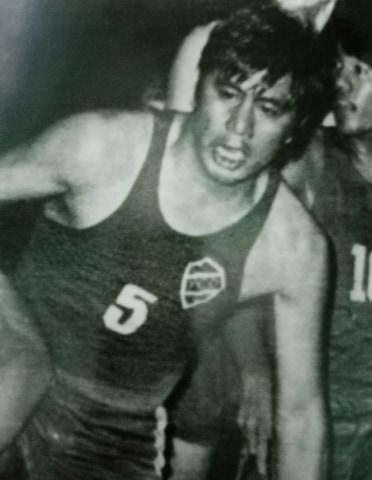
4. This 5-8 point guard who started playing the game at age 10 could really jump high. Following his prep days at St. Anthony HS, he played collegiately with the Adamson University Falcons where he lived up to his billing. At his height, this native of Sta. Barbara, Pangasinan could soar and dunk.
He donned the national team colors in the 1982 Asian Youth Basketball Championship in Manila and ronped away with a gold medal on a team piloted by American Ron Jacobs.
At the amateur level, he had a stint with Masagana 99, won a title with Solid Mills in the old MICAA and snared another crown with Paul Jordan in the Panin Cup.
Then it was on to the pros, where the playmaker de luxe played his entire nine-year (1986-94) PBA tenure with San Miguel Beer and won a number of title rings, including a Grand Slam in 1989.
He represented the country in a pair of Asian Games – 1990 and 1994 – that were bannered by professionals.
Deservedly so, the guy was monickered “The Director” for his ability to essay the plays with precision. What is his name? His initials are HC.
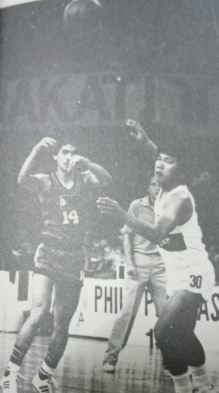
5. He comes from a family with collegiate or pro coaching experience for more than half a century, starting with the patriarch.
Like his two brothers, this 5-8 guard played the sport as well, starting at age 10. He was a member of the University of the East Red Warriors unit that snared the 1978 UAAP crown. The Manila-born fella also played for La Salle in collegiate and earned a roster berth on the gold medal-winning Philippine squad that grabbed the gold during the 1982 Asian Youth Basketball Championship.
Unlike his two siblings, he was not good enough to suit up in the PBA after college. That was because his forte was coaching. He landed a job with De La Salle in the late 1980s and early 1990s, steering the Green Archers to UAAP title in 1989 and 1990. A Grand Slam (third straight championship) was won on the court by a 2-0 sweep but for some technical blunders by the refs, it was given to FEU on a silver platter when the Green and White refused to accept a Game 2 replay.
From thereon, he went on to mentor six teams in the PBA, took a job with UE as its UAAP head coach and recently to La Salle Taft for his second tour of duty with the Green. What is his name? His initials are FP.
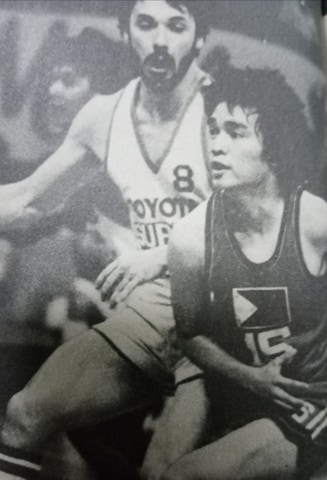
6. This former Far Eastern University Tamaraw was a star in his own right. But he barely received national attention, not when his much-publicized teammates during the 1959 World Basketball Championship in Chile included such names as Carlos Loyzaga, Kurt Bachmann, Mariano Tolentino, Alfonso Marquez and Carlos Badion, and in the 1960 Olympics in Rome, Italy that was bannered by team skipper Badion, Bachmann, Marquez and Narciso Bernardo and Edgardo Ocampo.
The fact that the 6-2 forward-center was recruited to play for the University of San Francisco in the U. S. NCAA already said something about the four-time national player who also made it to the 1962 Jakarta Asian Games and 1963 Taipei ABC tournament that won the titles for the Philippines on both occasions behind skipper Loyzaga.
This Betis, Pampanga native was also a member of the famed 1950/1960s Ysmael Steel team in the old MICAA that also was composed of a number of superstars. Who is he? His initials are GC.

7. The 6-2 center-forward from Orani, Bataan came from the University of the East Red Warriors factory in the late 1970s. This elongated southpaw donned the PH national colors thrice – 1970 Asian Youth Basketball Championship in Manila and pair of Asian Games in 1970 in Bangkok, Thailand and in 1974 in Tehran, Iran.
He joined the Crispa Redmanizers under former UE coach Virgilio (Baby) Dalupan in the old MICAA and PBA. He ended his six-year pro tenure (1975-83) with Galerie Dominique with an 11.7-point average. What is his name: His initials are RS.
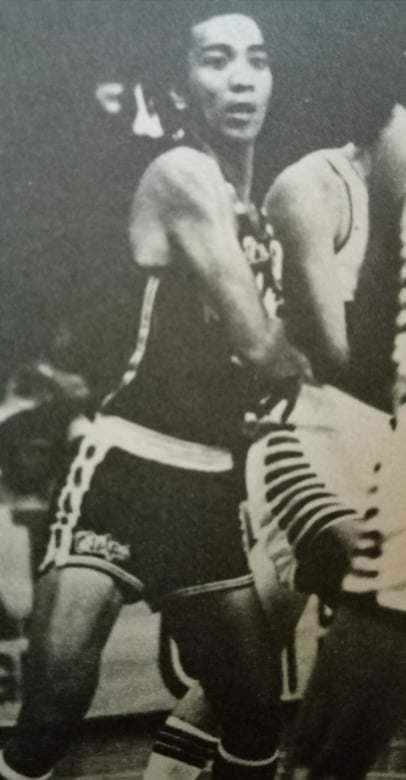
8. He suited up for the Far Eastern University Tamaraws in the UAAP during the mid-1970s and made it to the gold medal-winning PH team in the 1977 Asian Youth Basketball Championship in Kuwait.
This 6-2 forward from Makati City eventually performed with Universal Textiles, CDCP and Magnolia in eight seasons (1978-85) in the PBA with a 7.7-point career clip in 264 games. Balloons are colorful but who is this player? His initials are RL.
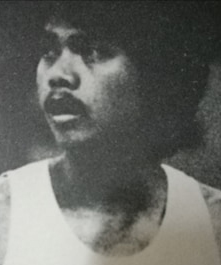
9. This player walks like a duck and plays like a duck and boy were the Yco Painters lucky to have the 5-8 playmaker out of Jose Rizal College in the old MICAA during the 1970s.
The Sta. Mesa, Manila-born fella played his entire six-year PBA career (1975-80) with the then-Don Manolo Elizalde-owned Tanduay franchise with a 13.8-point average in 224 appearances. What is his name? His initials are RC.

10. This burly 6-1 center-forward started at center for the Ateneo de Manila team during its 1969 NCAA championship season.
After a stint with the gold medal-winning PH national team in the 1st Asian Youth Basketball Championship in 1970, he hooked with the Yco Painters in the old MICAA then moved over to the PBA, where he saw action with Tanduay and San Miguel for five seasons from 1975-79.
This Caloocan City-born fella also represented the Philippines twice in the 1971 ABC tournament in Tokyo and 1972 Olympics in Munich, Germany. Who is he, Delilah is on the way? His initials are MS.
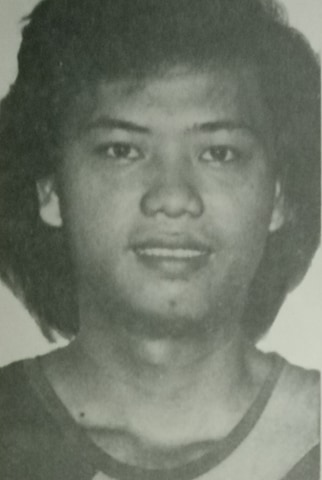
* * * * *
In case you didn’t know: 1-Edgardo (Ed) Ocampo; 2-Joaquin (Jake) Rojas Jr; 3-Elias (Ely) Tolentino Jr; 4-Hector Calma; 5-Frederick (Derrick) Pumaren;. 6-Geronimo (Gerry) Cruz;. 7-Rodolfo (Rudy) Soriano;. 8-Renato (Etok) Lobo; 9-Rene Canent; and 10-Marte Samson.
Disclaimer: The comments uploaded on this site do not necessarily represent or reflect the views of management and owner of Bandera. We reserve the right to exclude comments that we deem to be inconsistent with our editorial standards.


